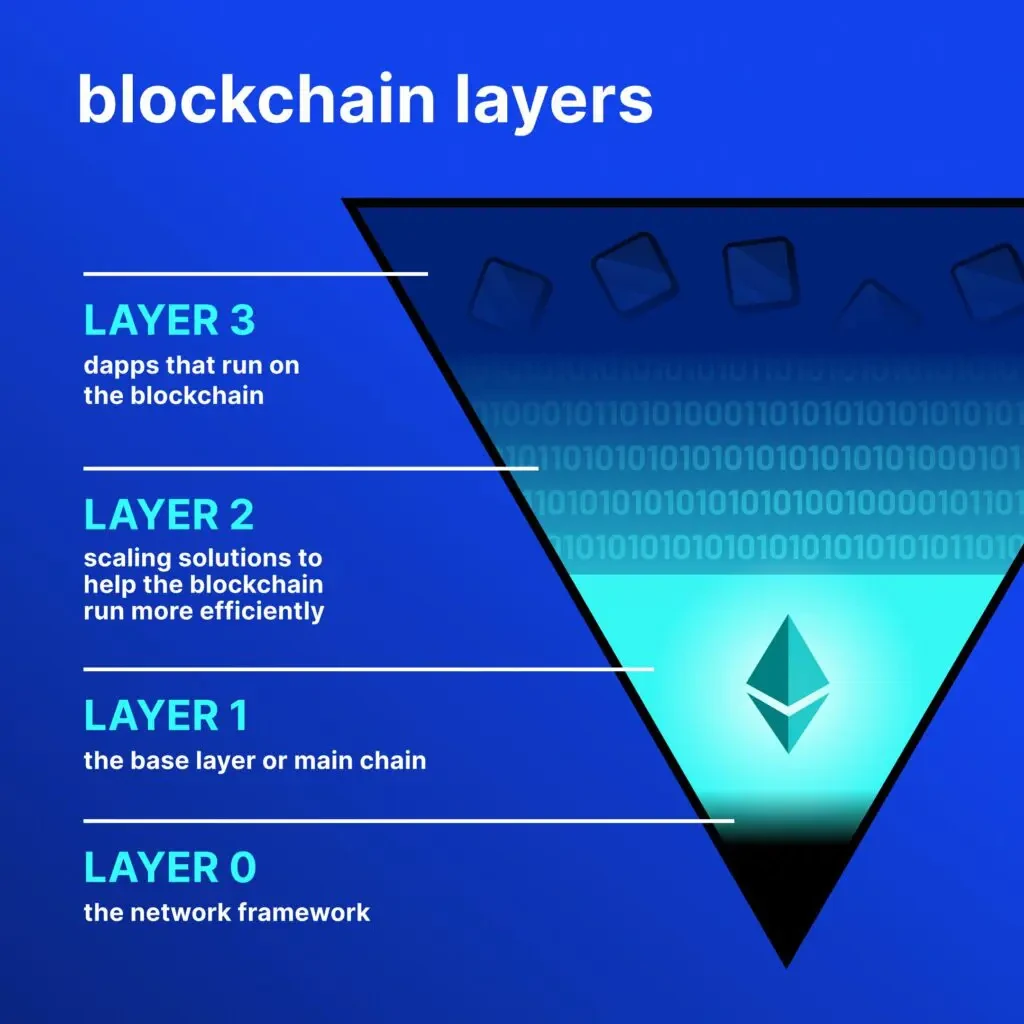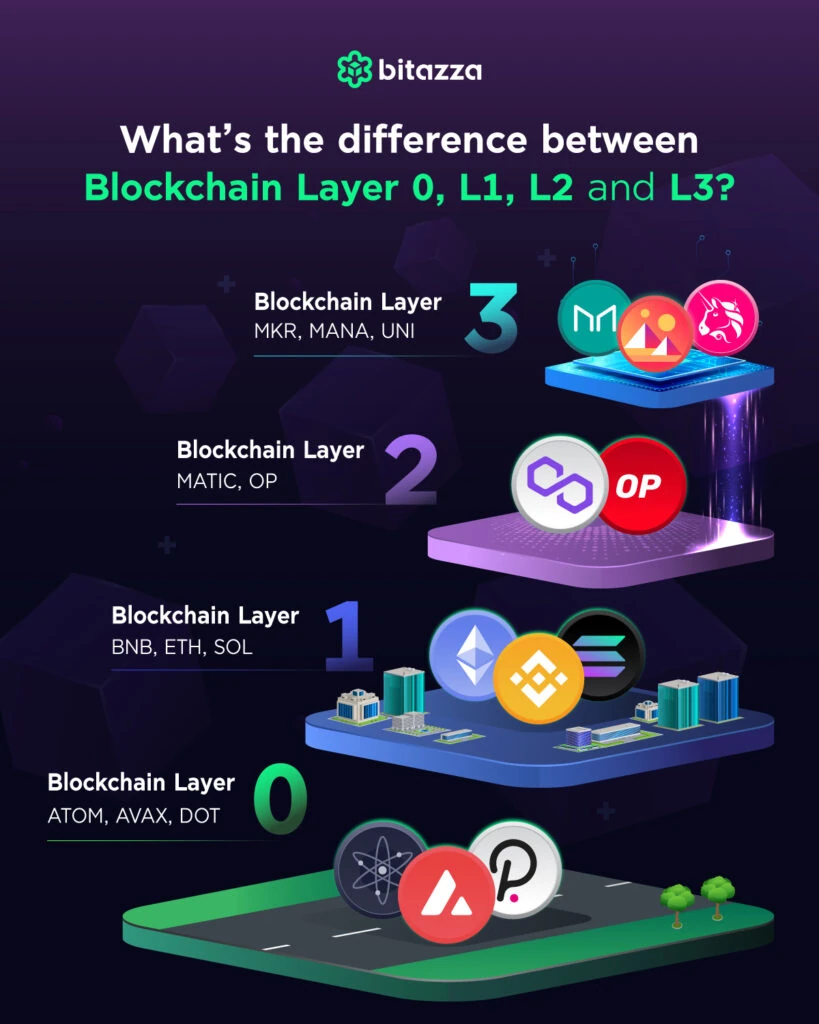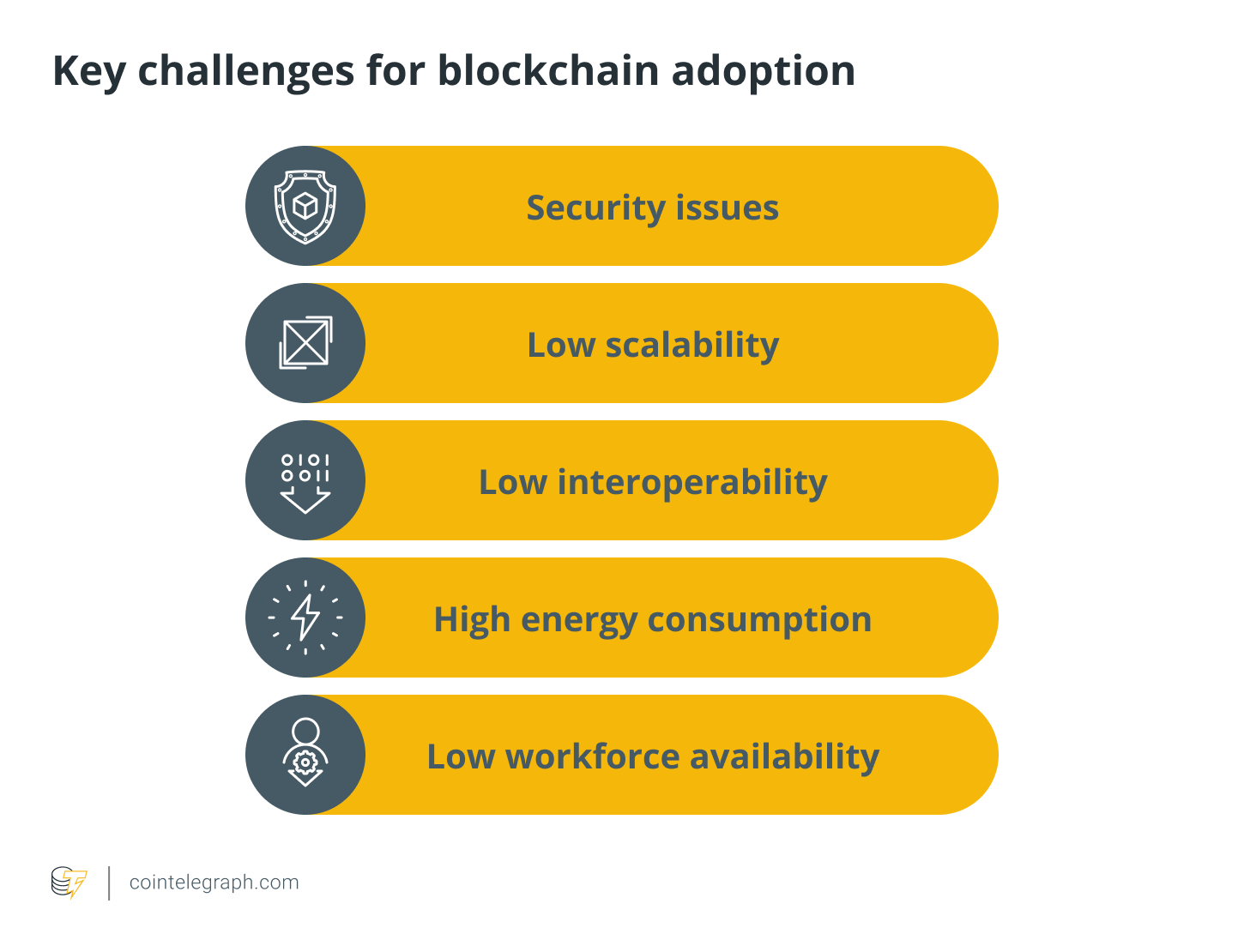Introduction to Blockchain Technology
Blockchain technology has a few layers as a nature of blockchain developement, as a matter of fact.
However, understanding the intricacies of this technology can be challenging.
In this article, I will explain those layers of blockchain technology, indeed.
Then I unravel its layers to provide a comprehensive understanding of its functionalities and applications.
I am excited, so let’s things done!

Indeed, Blockchain technology is a technology that consists of several technological layers.
Each layer performs different functions, so all to make the entire technological concept as functional as possible.
Without a doubt, each of these layers should be constantly developed.
Later, problems that appear especially at specific levels will be presented. But more on that in a moment.
Concept of Layers in Blockchain

Blockchain technology operates on different layers, and further each serving a unique purpose and offering distinct features.
In fact, these layers can be seen as building blocks, working together to create a robust and efficient system.
By exploring these layers, you can gain a deeper insight into the inner workings of blockchain technology, indeed.
Layer 0 – Interoperability
Firstly, interoperability is a critical aspect of blockchain technology, as it allows different blockchains to communicate and share information seamlessly. At the zero layer, efforts are made to establish interoperability between different blockchains and enable cross-chain communication, surely.
This layer explores solutions such as atomic swaps, sidechains, and interoperability protocols, which facilitate the exchange of assets and data across multiple blockchain networks.
Interoperability opens up new possibilities for collaboration and integration, enhancing the overall functionality and utility of blockchain technology.

Layer 1 – Foundation
Secondly, at the first layer, we find the foundational layer of blockchain technology.
Further, this layer focuses on the creation and maintenance of the blockchain itself. Then, it involves the fundamental principles of cryptography, consensus algorithms, and data structure.
The decentralized nature of blockchain ensures that no single entity has control over the system, in fact. It making it highly secure and resistant to fraud, especially.
Additionally, this layer also addresses the issue of data immutability, ensuring that once a transaction is recorded on the blockchain, it cannot be altered or tampered with.

Layer 2 – Scalability
Thirdly, scalability and transaction speed have been significant challenges for blockchain technology.
At the second layer, in fact, efforts are made to address these issues and enhance the efficiency of blockchain systems.
Various solutions, such as off-chain transactions and layer-two protocols, are implemented to increase the throughput and reduce transaction fees.
Finally, these advancements pave the way for broader adoption of blockchain technology. Then, enabling it to handle a higher volume of transactions and support applications that require real-time processing.

Layer 3 – Smart Contracts
Fourthly, smart contracts are one of the most compelling features of blockchain technology.
At the third layer, the focus shifts towards the development and implementation of smart contracts, surely. In reality, they are self-executing contracts with the terms of the agreement directly written into code.
Smart contracts automate the execution of agreements, so eliminating the need for intermediaries and enhancing transparency. This layer also encompasses decentralized applications (DApps), which leverage smart contracts to provide innovative solutions in various domains such as finance, supply chain, and healthcare.

Real-World Applications Blockchain Layers
Blockchain technology has found applications in various industries, by all means. Especially when, each leveraging different layers of the blockchain.
In the financial sector, blockchain has been utilized for secure and efficient cross-border transactions, because eliminating intermediaries and reducing costs.
Supply chain management has also benefited from blockchain technology, ensuring transparency and traceability of goods from the point of origin to the end consumer.
Additionally, blockchain has been used in healthcare for secure and interoperable health records, enhancing patient privacy and data sharing. Indeed, these are just a few examples of how blockchain technology is being applied across different layers to drive innovation and efficiency.

In each layer there are blockchains that are leaders, so it’s good practice to find these leaders.
Then check what applications are built on them.
Thanks to this practice, you are able to check not only the theory, but also the practicality of a given project.
What can convince you to invest more than application in everyday life.
Needless to say, then the practice becomes mainstream over time.
That’s why it’s worth finding the leaders, checking what applications have been built on them and then investing.
As a matter of fact, I don’t think this can be explained better. Don’t you think so?
Examples of Real-World Applications
To better understand this, I decided to present a few examples that will show very well what I mean, indeed.
Without a doubt, the undisputed leader of DeFi is Ethereum.
Firstly, Ethereum represents the first layer or the base layer.
In fact, this is the layer on the basis of which other projects are created.
Well, more on that in a moment, but let’s get to the point.
There is not enough space to present the number of projects on this Ethereum, but…
I will only mention a few following of the most famous of them.
Metamask
Web browser plug-in that connects your device to the Ethereum network. MetaMask also enables peer-to-peer sharing and token swapping. Further, you can read about Metamask here.
Opensea
A peer-to-peer trading market for crypto-collectibles and rare digital items. In fact, one of the largest NFT exchanges currently. So, jump to Opeansea website if you want to read about project more.
AAVE
It’s an open source, non-custodial protocol to earn interest on deposits and borrow assets, so you can read about AAVE here.
Uniswap
Automated token exchange on Ethereum, so you can read about Uniswap here.
There are plenty of examples, as I mentioned, but… I won’t list them all because it’s even difficult to catalog them all.
Anyway, I have presented some very well-known applications with real practical applications, surely to say.
After writing this subsection, you know exactly what I meant when I wrote about leaders in a given layer.
Ethereum is the leader and will remain so for a long time. I would be surprised if in a few months or even years a blockchain with a more practical application than Ethereum appeared.
Challenges of Blockchain Technology
While blockchain technology offers immense potential, it also faces certain challenges and limitations.
Scalability remains a significant concern, as current blockchain systems struggle to handle a large number of transactions simultaneously.
Energy consumption is another issue, as the consensus mechanisms employed by blockchain networks require substantial computational power.
Moreover, regulatory and legal frameworks surrounding blockchain technology are still evolving, presenting uncertainties and obstacles to widespread adoption. Addressing these challenges will be crucial for the continued growth and maturation of blockchain technology.
Blockchain Trilemma
Firstly, I would like to introduce the blockchain trilemma problem. Then, I’ll explain what it’s about.
In truth, Vitalik Buterin, the co-founder of the Ethereum blockchain, presented a common blockchain problem.
It’s about security, scalability and decentralization, also. That’s the whole point, indeed.

Three Components Explained
Scalability, security, and decentralization are the three pillars of the blockchain trilemma, of course.
In fact, scalability refers to the ability of a blockchain network to handle a large volume of transactions quickly and efficiently.
It is crucial for blockchain platforms to scale to meet the demands of a growing user base and also ensure smooth transaction processing.
However, achieving scalability is not as simple as it seems.
One challenge in achieving scalability is the size of the blockchain itself. As the number of transactions increases, so does the size of the blockchain, which can make it difficult for individual nodes to store and process the entire chain.
This can lead to slower transaction speeds and increased resource requirements.
Another challenge is the consensus mechanism used by the blockchain platform.
Traditional proof-of-work (PoW) consensus algorithms, like those used by Bitcoin, can be slow and energy-intensive, limiting the scalability of the network.
Newer consensus mechanisms, such as proof-of-stake (PoS) and delegated proof-of-stake (DPoS), aim to address these scalability issues by reducing the computational requirements.
Challenges for Blockchain Adoption

Security Issues
While blockchain technology is inherently secure due to its cryptographic principles, concerns remain regarding the privacy of user data stored on public blockchains.
Achieving the right balance between transparency and privacy is crucial.
Especially in applications where sensitive information is involved.
Innovations such as zero-knowledge proofs and privacy-preserving techniques aim to enhance privacy on blockchain networks.
Low Scalability
One of the most prominent challenges facing blockchain technology adoption is scalability, in fact.
As blockchain networks grow in size, the volume of transactions increases, consequently. Then, leading to potential bottlenecks and slower transaction processing times.
Scalability solutions like sharding, layer 2 protocols, and optimized consensus mechanisms are being explored to address this issue, as finally to write in closing this section.
Low Interoperability
Different blockchain platforms often operate in isolation, then lacking interoperability between each other.
This fragmentation hinders the seamless transfer of assets and data across multiple blockchain networks, surely.
Indeed, efforts to develop interoperability protocols and standards are underway to facilitate communication.
Further, data exchange between disparate blockchain systems.
High Energy Consumption
In fact, Proof-of-Work (PoW) consensus mechanisms, used by some prominent blockchains like Bitcoin and Ethereum Classic.
They are require substantial computational power, then it leading to high energy consumption and environmental concerns. Then, transitioning to more energy-efficient consensus mechanisms like Proof-of-Stake (PoS) used by Ethereum.
Alternatively, exploring another approaches to mitigate the environmental impact of blockchain networks is imperative for sustainable adoption.
Low Workforce Availability
There is a huge demand on the market for blockchain technology specialists, but it difficult to find good one. Technology itself is very young, but big tech companies already knows that blockchains will be our future.
I will only mention a few companies that recruit passionately, at first.
So, who doesn’t know Google, Amazon, Goldman Sachs, the Bank of New York Mellon Corporation?
Let me give you just a few examples of why working in this sector is so attractive.
In general, the workforce involved in crypto is getting at least 20 percent higher pay than employees in other asset classes.
For blockchain developers, the job is lucrative, surely. In fact, such an employee can earn a full package of $500,000 – $900,000 per year!
Of course, who wouldn’t want to earn that much, wouldn’t you?
Conclusion
Blockchain technology has emerged as a powerful tool with the potential to revolutionize various industries, at first.
By unraveling the layers of blockchain technology, then you can have deeper understanding of its layers and functionalities.
From the foundational layer to future advancements, each layer contributes to the overall robustness and efficiency of blockchain systems.
Indeed, it’s essential to embrace its possibilities while addressing the challenges that lie ahead.

Leave a Reply
You must be logged in to post a comment.